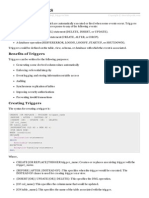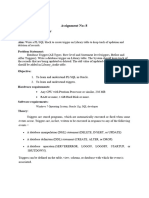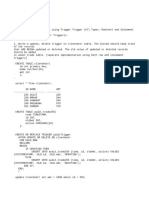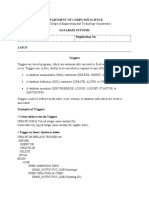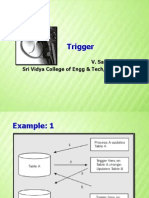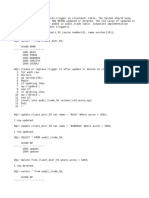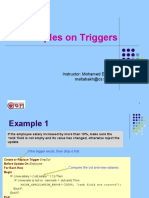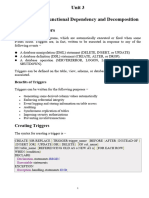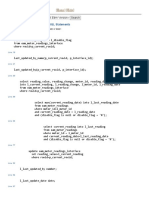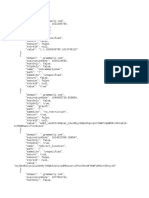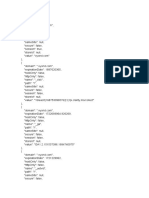0% found this document useful (0 votes)
40 views3 pagesDBMS Experiment 9
The document provides the syntax for creating a trigger in SQL, specifically for a CUSTOMERS table. An example trigger is shown that calculates and displays the salary difference during INSERT, UPDATE, or DELETE operations. Additionally, it includes a procedure to update salaries and demonstrate the trigger's output, confirming that 6 customers were updated.
Uploaded by
skgomango22Copyright
© © All Rights Reserved
We take content rights seriously. If you suspect this is your content, claim it here.
Available Formats
Download as DOCX, PDF, TXT or read online on Scribd
0% found this document useful (0 votes)
40 views3 pagesDBMS Experiment 9
The document provides the syntax for creating a trigger in SQL, specifically for a CUSTOMERS table. An example trigger is shown that calculates and displays the salary difference during INSERT, UPDATE, or DELETE operations. Additionally, it includes a procedure to update salaries and demonstrate the trigger's output, confirming that 6 customers were updated.
Uploaded by
skgomango22Copyright
© © All Rights Reserved
We take content rights seriously. If you suspect this is your content, claim it here.
Available Formats
Download as DOCX, PDF, TXT or read online on Scribd
/ 3



